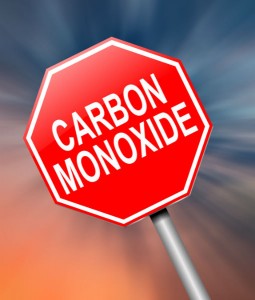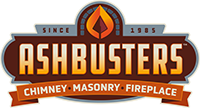A functional and high performing chimney is a fantastic addition to your home…especially during these cold months. But, to safely enjoy, it is recommended that you have a chimney sweep and inspection every year. Without proper usage of your chimney, it can become unsafe for you and your family. If you have questions about chimney safety, call the professionals at Ashbusters Chimney Service.

Don’t fall prey to this deadly gas. Eliminate the risks of carbon monoxide poisoning by having regular inspections and being alert!
What is Carbon Monoxide?
Carbon Monoxide is an odorless, colorless gas that is extremely toxic. Once it enters the bloodstream, it begins to compete with the current oxygen levels. CO can be released into the air by using everyday appliances, such as generators, vehicles, and also your fireplace. If you are around one of these, make sure the area you are in is open. If the appliance has a vent, arrange where the fumes go outside. Lastly, never use something to heat your home that is not intended for that purpose, such as a gas oven, and do not leave other heating methods unattended or on overnight.
How can you prevent carbon monoxide from getting in the air?
Chimney draft is important when talking about carbon monoxide because if the draft cannot appropriately pull air through the home and out for the chimney, it will remain in the home. You can adjust the draft pressure by changing the heat of the fire or changing the physical structure of the chimney.
Reasons draft is compromised
Often times a draft’s flow can be disrupted. One of the most common and avoidable reasons is an abundance of creosote build up inside of the chimney. Creosotes are combustion particles released as firewood is burned that clump together as the make their way up the chimney. This is one of the reasons you should always make sure your chimney sweep is Chimney Safety Institute of America (CSIA) certified. CSIA has a list of set guidelines they use to ensure that you appointment is worth your time and will keep you safe. Other things that could cause draft problems include clogged dampers and dirty chimney caps.
Other sources of potential trouble
Other than draft problems, carbon monoxide can build up when other equipment is consuming the same clean air that is being vented within the house. If you use exhaust fans when you’re using a fuel-burning heater or stove, only run the fans for a few minutes at a time. Prolonged usage could remove too much air and waste heat. Also, do not run any power attic vents during the winter. When a fireplace or woodstove is running, open a window and turn off anything that releases warm air. You can also try replacing the air duct that connects to the fireplace so it does not steal air from your furnace.
How can I protect my family?
Now companies have invented CO alarms that you can install in your home to be alerted if levels in the area become dangerous. To get the best results, spread multiple alarms throughout the home, especially if there are multiple levels or an open floor plan. Some systems are built where you can connect them so that when one sounds they all go off. These alarms should be used with smoke detectors, not instead of, and should be tested periodically.
What does CO poisoning feel like and how is it treated?
Because of the state of carbon monoxide, people cannot tell when it begins to fill a room. This is detrimental to a person’s health because they will intake more than their body can handle before they even realize it. There are differing levels of symptoms you can have depending on how much of the gas you take in. Mild symptoms are flulike and include nausea, dizziness, headache, and fatigue, while the more severe symptoms can lead to fatality. If someone in your home has a medical condition they may react differently or more quickly, while people with heart and breathing conditions will begin to experience chest pain.
If you or the people around you begin to feel these symptoms, you should evacuate the area immediately, even if you cannot get to whatever is releasing the gas to turn it off. You should also seek immediate medical attention. Patients who have had minimal exposure should be able to be treated in office, but in extreme cases they may have to be admitted into a hospital to receive oxygen to normalize levels.
If you have any additional questions about the risks of carbon monoxide or want to schedule your annual chimney inspection, call us today.
